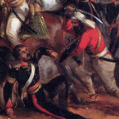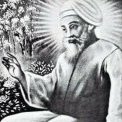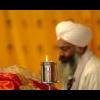Leaderboard
Popular Content
Showing content with the highest reputation since 12/04/2022 in all areas
-
5 points
-
Yes, this is what Guru ji says: ਸਉਦੇ ਵਾਹੁ ਵਾਹੁ ਉਚਰਹਿ ਉਠਦੇ ਭੀ ਵਾਹੁ ਕਰੇਨਿ ॥ Such people (uchreh) utter (vaahu vaahu) praises of the Almighty (saude) when going to sleep and (karen) do it (uthde) when they get up; ਨਾਨਕ ਤੇ ਮੁਖ ਉਜਲੇ ਜਿ ਨਿਤ ਉਠਿ ਸੰਮਾਲੇਨਿ ॥੧॥ Nanak bright are the faces of those who daily arise early and remember God. p3125 points
-
I know, but to get things moving you can start a topic on mindless things such as my wife/mother in law did this and have multiple replies. Those get a lot of replies.4 points
-
Will you please consider donating 75% of your land for reforestation and growing organic food for langar? Please PM me urgently I would also like to address your misconceptions of land ownership. Please read through the end in the spirit of truth and reconciliation. You may learn something new and change your worldview! 1. To say that Jats founded these villages or were landlords or ever owned the commons, is not true. First, the Jats were themselves originally only peasant (leaseholder) farmers. To understand the Commons, Dalit land alienation and how and Jats came to own all the land in Punjab, we need to step back in time and understand feudalism and certain key events in ancient Arya, Guru, Misal, British and Indian history. 2. Let's start with ancient history. The commons were very old tracts of forest land from ancient Aboriginal times, that pre-date Aryan (Jat) settlements in what is called Punjab today. As part of the Aryan conquest and subsequent Aryan Colonisation of North-West India, most arable land was acquired by Jats by the dispossession of the indigenous Dalit tribes (in much the same way as indigenous people have been dispossessed the world over). In the caste system and the feudal ownership system, they were considered to be peasant farmers, and given Kabza of new land that was made available by expanding existing Indigenous settlements (clearing the forests). Most land on paper (whether farmed by individually by Jat men or collectively by Dalit women), was owned by the local Brahmin, Rajput, and sometimes by Khatri Traders and money lenders. These sub-landlords held a simple title to collect tax. Absolute title was held by the local ruler in right of the prevailing Imperial crown at the time (be it Muslim, or Hindu). However In the feudal system, kabza played a huge role (possession is defacto ownership in law even today). Landlords came and went and estates exchanged hands frequently between Rajas and Navabs due to war etc. Sub-landlords also changed hands. But the customary occupier rarely changed. Indeed Peasant farmers and Dalit Bastis were indeed literally considered to be part of the estate itself (when the estate changed hands; the people who lived there- and their land rights, were included in the sale!). In other words, the tenant farmer had a customary or hereditary right to the land, and the title owner was just a tax-collector with no right to either evict the customary hereditary farmer or hand it over to another, unless by consent or severe violation of law, such as treason etc. 3. As forests were considered to be valuable Imperial hunting land, it wasn't often opened up to new Kabza. What the Jats had got long ago during the early days of Aryan Colonisation, was what they still had- and the Dalits were at an advantage, as they had customary Forest rights to forage and Hunt, which the Jats did not. However, in the centuries prior to Guru Nanak, and especially during the Mughal era, more and more forests were clearcut for export and shipbuilding and the new kabza (permanent lease) for the deforested land was mostly given to Jats (whether Hindu or Muslim converts)- often at the expense of the Dalit tribe's ancient customary rights). But the actual land title was invariably in the hands of Brahmins or money lenders (as zamindars; sub-landlords), and in imperial records, absolute title was owned on paper by the regional ruling Rajas or Navabs (landlords). Dalits thus became disenfranchised of all but the Commons, which they fought for as their ancient Aboriginal right. 4. The Gurus totally disrupted the discriminatory Arya Caste system and their exploitation of Mother Earth. The Gurus redistributed land BACK to Dalit stewardship. Their Dharamshalas indeed were modeled on collective Aboriginal Forest gardening and foraging, as practised by Dalit women- with produce being used for the whole community and Langar; commercial farming was strictly banned under the Gurus, and the Jats, many of whom had lost their Kabza due to Expanding Dharamshalas and land back in Dalit hands, absolutely hated these pesky Gurus for this. (Note that upto 90% of ordinary Sevaks at Dharamshalas came from low caste backgrounds, whilst Jat-Rajputs were very few and Brahmins quite rare). Now, the Gurus achieved this great land redistribution, by obtaining absolute land grants from sympathetic local rulers. So they exercised their acquired legal authority to change the Kabza on land in their own possession, but a lot of Punjab's forests were still held by Brahmins and money lenders, on behalf of some Raja or Navab (who were not as sympathetic to the Gurus). So under the Gurus, Dalits gained the most and Jats lost the most, whilst the forests and food were no longer seen as commodities. Langar, grown at Dharamsalas by indigenous women, was feeding the hungry masses. This was revolutionary. 5. The Rajput and self-proclaimed savior of the Jat Arya Race, Banda Bahadur (believed by old, reliable Akali Singhs to have been a complete fraud), and his many Jat successors, upset the whole system of hereditary feudalism, Aboriginal rights to Commons, the Guru's Dharamsalas and the forest as a living Goddess. For thousands of years after Aryan and Muslim regimes, land had been tax-managed by brahmins and money lenders on behalf of local rulers. Now some Jats in Khalsa garb were engaged in conquest for Land and power. First, they occupied the Dharamshalas and exterminated or expelled the Dalit Sevaks. Then they warred with the various Muslim kings. Jagirs, or land grants were made to the likes of Navab Kapur Singh. Their many land conquests were documented in legal records known as "Misal" (literally meaning the accounting of conquest), and henceforth all the acquired land and money was divided between several local (mostly Jat) warlords, taking on the name Misl. Thus, these imperial Jat warlords now owned “imperial title” to most of Punjab and beyond. But unlike previous periods in history, where ruler's land would change hands but kabza holders stayed put, the Jats upset the whole system: Zamindari was abolished and replaced with "Sardariat", a new form of feudalism, wherein the new Jat warlords weren't satisfied with just being tax-collecting overlords- they wanted the land for themselves. Upsetting thousands of years of feudalism as well as respect for ancient customary aboriginal rights, they vanquished the role of tax agents and lords and evicted non Jats; especially Dalits. Jats gave themselves ownership and permanent and exclusive tenancy over the whole of Punjab. Loyal Muslim Jats and some Khatri were allowed to keep their old Kabza, whilst Dalits were evicted and rendered virtually landless. Some aboriginal Commons still existed, as they were deep in the jungles and hence seen to be worthless as revenue land- but now the Dalits had “legally” become illegal squatters on their own ancient land (like what happened to aboriginal Australia). Now- before you start complaining; "Sardariat" has nothing to do with the Gurus. It still exists in Pakistan and the Muslim feudal landlords are still called “sardars”, and Dalits Sikhs in Punjab still call their Jat Sikh landlords "Sardars"). 6. British rule: The British introduced simple title in all of Punjab apart from certain areas of the North West frontier/KPK (where Sardariat still exists today). The British introduced land revenue records managed by Tehsildars (the system still exists in rural areas). The British Crown acquired all forest land, and so either the British Crown or Jat Panchayat were declared to be owners of the Dalit's Commons, depending on where they were located. PEPSU and Dogra Kashmir and other Princely states had their own system, although valuable forest land (and thus many Dalit Commons) was reserved to the Crown. So Commons are an incredible ancient aboriginal heritage of Punjab, and were never owned or farmed by the Jats until they stole the land by conquest. 7. Now, as happens in commercial agriculture, Jat landholdings gradually reduced as a result of large families and loan defaults; Brahmins and Khatri money lenders had been gradually acquiring a lot of land. At the same time, the forest was being cleared rapidly for wood export to Britain. Dalits, reliant upon sedentary and non-sedentary gardening, foraging and hunting in the middle of the jungles, were finding themselves landless due to mass clearing of forests by the British- and Jats were not letting them access the new “village Panchayat Land” (which still happens today). So, Dalits were organising a big revolt. And the Jats were furious with Brahmins and Khatris whom they accused of "stealing Jat land", and didn't want Dalits to be given any rights. The British government, fearing revolt, were pressured into passing the Criminal tribes Act, which effectively created concentration camps and kill on sight orders for Dalit tribes, as well as the Punjab Land alienation act 1909, whereby legally only Jats (of any religion) were allowed to legally own land (as the designated “agrarian caste”). Transfer of agricultural to non-Jats was thus banned (This law is still on the books as is, in Pakistan Punjab, and in a modified form in Indian Punjab). Importantly, The Punjab Alienation of Land Act also meant that only Jats could buy up Punjab's newly deforestated land at auction at throwaway prices or even for free (Like with imperial White Colonisers in Canada, the British asked the Jats to cut the forest and hand over the timber, and in return they would get legal title). So within a few decades of British rule, all of Punjab's rich jungle was destroyed by Jats, for the British government, and many hundreds of thousands of acres of land came into Jat ownership as new agriculture land (former forest land). This can be studied by looking at Colonial revenue, forest and survey records- if you don’t believe me. Punjab’s vast forest lands didn’t just disappear into thin air! The Jats took it. These British Acts also guaranteed that Dalits could not even legally buy back their own land- and so they were rendered totally landless and became bonded indentured Labour for Jats. This helped to cement Jat dominance and Dalit slavery in the modern British legal system, inherited and carried on by India. This is akin to the legal dispossession of Indigenous people's from their land in eastern US states, combined with slavery (US natives were expelled West; Dalits were simply enslaved by the Jats). 8. Post-independence, a half-hearted attempt was made to redistribute land to landless Dalits throughout India- and was met with a fierce backlash by the Brahmin-led RSS. In Punjab, the Arya supremacist mentality was represented by the Jats (Brahmins and Rajputs Elsewhere). In other words, the Indian government and Jat Sikhs worked hand in glove to continue Dalit oppression (even as they sparred openly like the competing Arya factions that the really are- the true context of the Bhindawale movement). Very Importantly, when "degraded forest" Government land was opened up for auction in Punjab, on the claim that Dalits could benefit. ’Many Dalits' ancient Commons were on these former tracts of forests. Dalits had been farming (and caring for trees and Banyan Groves there for many thousands of years before Jat Arya even existed in India). But the auction was designed to benefit Jats; being open to the general public, Dalits could not compete with the Jats in auction. They had Zero funds, as landless slaves. So your claims of some kind of Congress Gift to Dalits is a lie. In comparison- free land grants were made to Dalits in other states. And you yourself have highlighted the underhand tactics used to prevent land from becoming Commons again; your family got a small corner, but at the expense of how many Dalit children dying of hunger? Think about that. We were doing a project recently with struggling Dalit families across Tarn Taran. Every house we went to had the same story again and again: "what did your ancestors do? They farmed and foraged in the jungle on the other side of the village from ancient times. But the Sardars (Jat Sikhs) took it away from us. When it came up for auction of the freehold title, we couldn't raise the funds. The Sardars Acquired the freehold of our own houses too and they regularly extract free labour from us and harass and molest our girls as payment)." You would know that this is common across Punjab, if you lived in India and interacted with real people on the ground. 9. More recently, due in part to Supreme court orders, Dalits got a hard-won right to bid for annual leases of 1/3 of Panchayat land (what's left of the Dalit's ancient forest Commons and in spite of tactics used to prevent panchayat land from being created) but it wasn't free: they had to pay full market rate for the privilege for a one year lease from the (Jat-controlled) Panchayat to Dalits. If you live abroad, what you may not know is that the Jats bring along the local police and thugs and either prevent the auctions from taking place, or place dummy Dalit agents to bid and hand over the land to the Jats and most horrifically - they use sexual violence. There is indeed a pandemic of rape and murder of Dalit women trying LEGALLY to farm their own ancient common lands- in which Canada's MMIW pales in comparison. See this short documentary: As an aside, the very interesting thing is how Dalits farm the Panchayat land, (when they are lucky enough to win the bid for get an annual lease): they farm collectively- by the whole community, for the whole community (every family gets an an equal share of the produce). And it is led by WOMEN. In other words, the Dalits are still growing food communally, equally, and not-for-profit and by women- the way their aboriginal ancestors did, and the way the Guru's Dharamshala's forest gardens were run. They just want to make sure that everyone has food to eat, and be sustainable in the process. Compare with Jats, commercial farmers, who are are hell bent on exploiting every single square inch of land, with maximum pesticide, for a commercial crop. It's run by men and they are reliant upon slave or migrant labour. Conclusion: I have simplified the history a bit to keep it easy to understand but it boils down to the White/Aryan Coloniser mentality of Colonise and Exploit mother Earth and indigenous peoples: grab-and-exploit as much land as possible, and enslave Indigenous people, hide behind religious garb, and resist reparations, truth and reconciliation. At least you now can no longer plead ignorance! Ultimately, the proof is in the pudding. If you have 15-20 acres, and your family hasn't lived in Punjab, nor farmed it for 3 generations, you aren't reliant on the land to put food in your mouth- you don't need the land! Let indigenous Dalit womem take care of it as stewards; it is internationally recognized that indigenous people do a great Job at protecting mother Earth as custodians. So might I humbly ask you to donate at least 75% of your land to us for reforestation and to grow organic food for langar purposes? The true Sikh would jump at the opportunity! If NRI Jats donated their landholdings to grow forests and organic langar gardens- they could save Punjab. Western born Jats are educated. They are taking part in community gardening and nature stuff. So why continue to Exploit and squeeze every single Penny out of Punjab and it's indigenous peoples? Punjab can only be fixed if and when educated and Gurmukh Jats, as the Power holding class, were to engage in truth and reconciliation. So I am hopeful that, as an educated and caring person, and as someone who has Faith in the Guru, that you will be willing to offer land. If you want to talk about donating your Land, please PM me.4 points
-
I thought I would up this thread since she is "running for president" (really, she wants to be vice president). Anyway, the incident discussed in this thread is just more evidence that the Sikh community is perhaps more pathetic than any other community on the planet. Sikhs are extremely insecure and desperate for acceptance and recognition. I remember years back some stupid uncle at the Gurdwara was bragging that she is a "Randhawa" like him. If I was a Randhawa, I would not want anyone to know that she was one too.4 points
-
"I'm a devout Sikh -- and married to a man." What an absurd statement. I'm glad that Jasvir Singh has a trimmed beard, as it helps make it obvious how inaccurate his claim of being a "devout Sikh" is for people who may not know that same sex marriage is not compatible with a gurmat lifestyle. The funny thing is, just observing the organization from its online presence, I would have guessed that it was created primarily to help guys like Jasvir Singh and Param Singh (remember how he appeared on a dating game show?) meet women. How wrong I was.4 points
-
I think you're correct here. There is a redefinition of each religious group by Guru sahibaan in Gurbani. The new vision Maharaj offers, naturally and gently funnels them into a more Sikhi oriented way of life. The 4-doors-one-walkway metaphor.4 points
-
4 points
-
however, the point is modern day "sants" seem to make it look like that you need to be unmarried to be a Sant. There are not enough role models of so-called sants which live a grihast jeevan. To me it just feels like these personalities are forcing a celibate thinking onto sikhs as some kind of spiritual benefit.4 points
-
There is a group of Singhs in the uk who met with Baba Ji in 1999 when they were doing Tap at Guru Ka Lahore. There are also pictures from this time as well. To say Baba Ji went into hiding to live another life is quite absurd. Ask those who did Seva of Baba Ji when they stayed in California.4 points
-
I will be honest: the thought crossed my mind. Showing up in Punjab suddenly after living abroad for so long, and now getting away despite the entire might of the Indian government supposedly being marshaled to capture him ... it all seems a bit odd. There were definitely some people from the 80s/90s era who seemed fishy in similar ways.3 points
-
3 points
-
Wouldn't being a good Muslim endorse keeping prisoners of war as slaves and in the case of women sex slaves? Likewise being a good Hindu would encourage following the caste system. These things are explicitly mentioned in the Quran and Gita.3 points
-
Amritsar should be more than that even, should be given a special status like Rome and City of London!3 points
-
This paradox only works with the Abrahmic conception of God which is that of a creator and a creation which is a completely separate entity from God. Gurmat teaches that Vaheguru is "IK OANKAAR" - this is an all pervading "force" so to speak which in our universe takes the form of the sound "Oaannn(g)". This force has a mind and personality (not an impersonal force), it pervades everyone and everything. No part of creation is separate from this - what is perceived to be a created thing is simply a wave eminating from the ocean that is Vaheguru, i.e. the creation and creator are one. Therefore this concept of creation and destruction as we know it, and how it is posed in the paradox question, is an illusion that does not exist - all that exists is oneness (Vaheguru) in various forms. The above answer alone should cover it, but to add an extra layer, should Vaheguru wish to engage in this, he certainly can - One way of explaining what " Ik OANKAAR" is is to say that it is actually the sum total of everything and more. Ik OANKAAR can at one time take any "God form" he likes and also the form of such an unliftable rock -both are God. Then, should God so decide he wants to, he can make another form of himself which then lifts the rock. The sakhi of how Harnakhash was killed despite him having a divine boon which seemingly made him immortal is a great example of divine creativity being far beyond limited human intelligence and that ultimately God can literally do anything in a way that mere human brains could never conceive. Guru Hargobind Sahib Ji was also displaying divine creativity when he created the multi-tassled chola. In short, Vaheguru can not be limited in anyway and can answer absolutely anything.3 points
-
It should also be mentioned that the maryada (which probably most of us don't follow, but the puratan Singhs in the homeland do) is to listen Asa di Vaar in the morning, and you can do simran while you are doing so.3 points
-
and those same biharis are now turning on their employers and raping or running away with their daughters , beating and killing their sons via drugs . They are being supported by GOI to buy land in Punjab remember these were folks who were so hardup they had to move across India to make a living , it is part of the three pronged approach . destroy the history, the economics and then the people3 points
-
Sant Isher Singh Rara Sahib instructed the Sangat to engage in Waheguru Jaap first. Then followed by Gurbani Jaap.3 points
-
3 points
-
3 points
-
As far as I can see, Gurbani recommends both approaches. Basically: Question:Gurbani or Gurmanter? Answer: Yes. ਮਃ ੪ ॥ 4th Guru. ਗੁਰ ਸਤਿਗੁਰ ਕਾ ਜੋ ਸਿਖੁ ਅਖਾਏ ਸੁ ਭਲਕੇ ਉਠਿ ਹਰਿ ਨਾਮੁ ਧਿਆਵੈ ॥ He, who calls himself a Sikh of the Great True Guru, should rise early and meditate on God's Name. ਉਦਮੁ ਕਰੇ ਭਲਕੇ ਪਰਭਾਤੀ ਇਸਨਾਨੁ ਕਰੇ ਅੰਮ੍ਰਿਤ ਸਰਿ ਨਾਵੈ ॥ He should make efforts early in the morning take bath and have ablution in the tank of Nectar. ਉਪਦੇਸਿ ਗੁਰੂ ਹਰਿ ਹਰਿ ਜਪੁ ਜਾਪੈ ਸਭਿ ਕਿਲਵਿਖ ਪਾਪ ਦੋਖ ਲਹਿ ਜਾਵੈ ॥ By repeating Lords God's Name under Guru's instruction all his sins misdeeds and accusations are wiped off. ਫਿਰਿ ਚੜੈ ਦਿਵਸੁ ਗੁਰਬਾਣੀ ਗਾਵੈ ਬਹਦਿਆ ਉਠਦਿਆ ਹਰਿ ਨਾਮੁ ਧਿਆਵੈ ॥ Afterwards at sun rise he sings Gurbani and whilst sitting or standing he meditates in God's Name. p305 Kabir ji: ਕੋਈ ਗਾਵੈ ਕੋ ਸੁਣੈ ਹਰਿ ਨਾਮਾ ਚਿਤੁ ਲਾਇ ॥ Some sing, some listen while focusing the mind on God's Name. ਕਹੁ ਕਬੀਰ ਸੰਸਾ ਨਹੀ ਅੰਤਿ ਪਰਮ ਗਤਿ ਪਾਇ ॥੪॥੧॥੪॥੫੫॥ Says Kabir, doubtlessly (both) obtain the highest state at last. p3353 points
-
Gurbani says to be absorbed in God, don't bother with others, and God will take care of you: ਮਨੁ ਬੇਧਿਆ ਦਇਆਲ ਸੇਤੀ ਮੇਰੀ ਮਾਈ ॥ My soul is pierced by the Merciful Master, O my mother. ਕਉਣੁ ਜਾਣੈ ਪੀਰ ਪਰਾਈ ॥ Who knows the pain of another? ਹਮ ਨਾਹੀ ਚਿੰਤ ਪਰਾਈ ॥੧॥ ਰਹਾਉ ॥ I don't worry about others. Pause. p5883 points
-
3 points
-
Originally the kirpan was just one part of a broader panj hathiars (5 weapons). None of these were supposed to be 'symbolic' but practical, functional weapons to protect yourself and the panth. In my opinion ANY functional hathiar is infinitely better than some useless 'symbolic' thing.3 points
-
Nature magazine says number of species in the world is about 8.7 million. Gurbani speaks of ਚੌਰਾਸੀ ਲੱਖ ਜੂਨ (8.4 million species). This is remarkably close. ਚਵਰਾਸੀਹ ਲਖ ਜੋਨਿ ਉਪਾਈ ਰਿਜਕੁ ਦੀਆ ਸਭ ਹੂ ਕਉ ਤਦ ਕਾ ॥ "Thou have created eighty-four lacs of species and given to them all sustenance since that very time." p1403 Note: The word joni is used. It seems quite clear that joni refers to lifeforms and not life stages (unlike what the missionaries think). Just to make it even more clear: Kabeer ji writes: ਬਇਆਲੀਸ ਲਖ ਜੀ ਜਲ ਮਹਿ ਹੋਤੇ ਬੀਠਲੁ ਭੈਲਾ ਕਾਇ ਕਰਉ ॥੧॥ "Forty-two lacs of beings are in water. How can I bathe the Pervading Lord therein O brother." p485 So how is it that jooni is supposed to mean life phase or stage of life? The missionaries trying to convince you that "jooni" means stage of life is as if you went to the electronics store to buy a television and the salesman tried to sell you binoculars because you can also see (vision) far (tele) with a binocular. It's just such a stretch.3 points
-
The problem is that these theories promoted by the "missionaries" is that they (missionaries) don't go through Gurbani looking for what it says. Rather, they first have made up their mind that they don't want to accept reincarnation, and then blindly misinterpret every relevant Gurbani verse. Secondly, I'll admit there are verses that could be interpreted either way, but the problem (for them) is there are verses that simply don't fit in an anti-reincarnation theory without really stretching the meanings. The plain meanings fit a reincarnation approach. Saying that everything is a metaphor is a copout. You can see this right in Nitnem: ਜੇ ਕੋ ਗੁਰ ਤੇ ਵੇਮੁਖੁ ਹੋਵੈ ਬਿਨੁ ਸਤਿਗੁਰ ਮੁਕਤਿ ਨ ਪਾਵੈ ॥ ਪਾਵੈ ਮੁਕਤਿ ਨ ਹੋਰ ਥੈ ਕੋਈ ਪੁਛਹੁ ਬਿਬੇਕੀਆ ਜਾਏ ॥ ਅਨੇਕ ਜੂਨੀ ਭਰਮਿ ਆਵੈ ਵਿਣੁ ਸਤਿਗੁਰ ਮੁਕਤਿ ਨ ਪਾਏ ॥ (Anand Sahib, 22) If anyone turns his back on the Satguru, he won't find Mukti. He won't find Mukti even if he goes asking wisemen. He will wander through countless lives (jooni), he won't find Mukti without the Satguru. The missionaries want you to believe jooni means phases. The plain meaning is simply life. Dictionary definition: ਜੂਨੀ ਸਰੋਤ : ਗੁਰੁਸ਼ਬਦ ਰਤਨਾਕਾਰ ਮਹਾਨ ਕੋਸ਼, ਪਬਲੀਕੇਸ਼ਨ ਬਿਊਰੋ, ਪੰਜਾਬੀ ਯੂਨੀਵਰਸਿਟੀ, ਪਟਿਆਲਾ। ਜੂਨੀ ਦੇਖੋ, ਯੋਨਿ. ਜੀਵਾਂ ਦੀ ਉਤਪੱਤਿ ਦਾ ਸਥਾਨ. ਆਕਰ. ਜਨਮ. ਭਗ. ਦੇਖੋ, ਅਜੂਨੀ. The word jooni is related to joni or yoni (which means birth canal or the starting point of a lifetime). The reason jooni couldn't mean phase is that it's related to yoni. Meaning that Gurbani is evoking the sense of a real birth, not just a phase of life.3 points
-
I was hearing katha and it said that if you think marriage is mandatory for an amritdhari how come none of the Panj Pyare got married and had kids. We should think before saying Sikhs must be married and have kids.3 points
-
That is why you cannot rely on English. Learn how to read, listen and write punjabi.3 points
-
Fateh ji Abhyaas has four main stages ji: 1. Baikhri (mouth): this is the beginning stage. jaap is done with mouth open using our tongue. Basically chanting like we talk normally. Abhiyaas starts off loud as the mind is not used to bhagti so is constantly running, hence we do simian loudly so it's easier to concentrate at this stage. ਹਰਿ ਹਰਿ ਨਾਮੁ ਜਪਹੁ ਜਪੁ ਰਸਨਾ ॥ Meditate on the Name of the Lord, Har, Har - chant it with your tongue. 2. Madham (throat): As the mind is becoming accustomed to listening to the shabad, we can now lower our voice to whispering jaap. as our mouth is open but we are using our breaths, this jaap occurs at the throat. If the mind starts to run go back to stage 1, then slowly turn it to whispering again. 3. pasanti (hirdha): the most important stage to reach as a gursikh. jaap turns to simran. now our mind begins to chant. there is no need to open our mouth or make any noise, all the sound is internalised. in this stage simran is matched with our breathing: ਸਾਸ ਸਾਸ ਸਾਸ ਹੈ ਜੇਤੇ ਮੈ ਗੁਰਮਤਿ ਨਾਮੁ ਸਮੑਾਰੇ ॥ With as many breaths as I have, I chant the Naam, under Guru's Instructions. ਜੋ ਸਾਸਿ ਗਿਰਾਸਿ ਧਿਆਏ ਮੇਰਾ ਹਰਿ ਹਰਿ ਸੋ ਗੁਰਸਿਖੁ ਗੁਰੂ ਮਨਿ ਭਾਵੈ ॥ One who meditates on my Lord, Har, Har, with every breath and every morsel of food - that GurSikh becomes pleasing to the Guru's Mind. 24/7 simran occurs at this stage. we are constantly breathing, we breath when we talk, sleep go to work etc. guru sahib has given an instruction to gursikh many times for our simran to be going 24/7: ਆਠ ਪਹਰ ਹਰਿ ਕਾ ਨਾਮੁ ਲੇਇ ॥ Twenty-four hours a day, he takes the Name of the Lord. ਊਠਤ ਬੈਠਤ ਸੋਵਤ ਜਾਗਤ ਹਰਿ ਧਿਆਈਐ ਸਗਲ ਅਵਰਦਾ ਜੀਉ ॥੧॥ While standing and sitting, while sleeping and while awake, meditate on the Lord, all your life. ||1|| ਊਠਤ ਬੈਠਤ ਸੋਵਤ ਜਾਗਤ ਸਦਾ ਸਦਾ ਹਰਿ ਧਿਆਈਐ ॥੧॥ ਰਹਾਉ ॥ Sitting down, standing up, sleeping and waking, forever and ever, meditate on the Lord. ||1||Pause|| As our simran is now internalised and matched with breathing, we can do simran all the time. Whatever we do throughout the day, that is what we dream in the night. if we are constantly chanting with out breaths throughout the day it will occur when we are sleeping as well. when our eyes open at amritvela, if simran Is going on inside that means mind ws chanting while asleep. This is why matching simran with our breaths (swass swass or swaas graas) is so important. it's the technique guru sahib has given. when every breath is connected to Abhiyaas, guru sahib has himself called that gursikh a sant: ਜਿਨਾ ਸਾਸਿ ਗਿਰਾਸਿ ਨ ਵਿਸਰੈ ਹਰਿ ਨਾਮਾਂ ਮਨਿ ਮੰਤੁ ॥ Those who do not forget the Lord, with each breath and morsel of food, whose minds are filled with the Mantra of the Lord's Name ਧੰਨੁ ਸਿ ਸੇਈ ਨਾਨਕਾ ਪੂਰਨੁ ਸੋਈ ਸੰਤੁ ॥੧॥ - they alone are blessed; O Nanak, they are the perfect Saints. ||1|| this is the technique Maharaj is referring to in this Shabad: ਨਾਨਕ ਸਤਿਗੁਰਿ ਭੇਟਿਐ ਪੂਰੀ ਹੋਵੈ ਜੁਗਤਿ ॥ O Nanak, meeting the True Guru, one comes to know the Perfect Way. ਹਸੰਦਿਆ ਖੇਲੰਦਿਆ ਪੈਨੰਦਿਆ ਖਾਵੰਦਿਆ ਵਿਚੇ ਹੋਵੈ ਮੁਕਤਿ ॥੨॥ While laughing, playing, dressing and eating, he is liberated. ||2|| because while "laughing, playing, dressing and eating" we are breathing, and if we have reached this stage where simran is connected to our breaths then Abhiyaas doesn't stop while doing any of those activities. Maharaj has even said: ਜਿਨ ਹਰਿ ਹਿਰਦੈ ਨਾਮੁ ਨ ਬਸਿਓ ਤਿਨ ਮਾਤ ਕੀਜੈ ਹਰਿ ਬਾਂਝਾ ॥ The Lord's Name does not abide within their hearts - their mothers should have been sterile. Thus, mind must begin to do Abhiyaas with every breath. this is the technique. you don't need to go into the forest, or spend your life with a sant. How merciful Maharaj is. The technique to salvation is as simple as that. Our breathing is going on constantly, just match your simran with it internally. But don't be fooled! The technique may be simple, but for the mind to begin chanting it takes a lot of effort. We should dedicate around 2 hours at amritvela to reach this stage. but don't rush. start off with 15 mins then work your way up. ਮੁਖਹੁ ਹਰਿ ਹਰਿ ਸਭੁ ਕੋ ਕਰੈ ਵਿਰਲੈ ਹਿਰਦੈ ਵਸਾਇਆ ॥ Everyone can chant the Name of the Lord, Har, Har with their mouths, but only a few enshrine it within their hearts. ਨਾਨਕ ਜਿਨ ਕੈ ਹਿਰਦੈ ਵਸਿਆ ਮੋਖ ਮੁਕਤਿ ਤਿਨੑ ਪਾਇਆ ॥੮॥੨॥ O Nanak, those who enshrine the Lord within their hearts, attain liberation and emancipation. ||8||2|| ਰਾਮ ਰਾਮ ਸਭੁ ਕੋ ਕਹੈ ਕਹਿਐ ਰਾਮੁ ਨ ਹੋਇ ॥ Everyone chants the Lord's Name, Raam, Raam; but by such chanting, the Lord is not obtained. ਗੁਰ ਪਰਸਾਦੀ ਰਾਮੁ ਮਨਿ ਵਸੈ ਤਾ ਫਲੁ ਪਾਵੈ ਕੋਇ ॥੧॥ By Guru's Grace, the Lord comes to dwell in the mind, and then, the fruits are obtained. ||1|| when simran is internalised then no one knows you are doing it. you can go to work, eat, sit with your family they'll all be oblivious to the simran going on within: ਸਤਿਗੁਰ ਕੀ ਐਸੀ ਵਡਿਆਈ ॥ Such is the Glory of the True Guru; ਪੁਤ੍ਰ ਕਲਤ੍ਰ ਵਿਚੇ ਗਤਿ ਪਾਈ ॥੨॥ in the midst of children and spouses, they attain emancipation. ||2|| 4. Para (nabhi) when simran is connected to our breaths then it will go right down to the source of our breaths, our nabhi. at this stage our breath is seated at navel and our consciousness rises to the tenth gate. ਨਾਭਿ ਪਵਨੁ ਘਰਿ ਆਸਣਿ ਬੈਸੈ ਗੁਰਮੁਖਿ ਖੋਜਤ ਤਤੁ ਲਹੈ ॥ The breath is seated in the home of the navel; the Gurmukh searches, and finds the essence of reality. ਸੁ ਸਬਦੁ ਨਿਰੰਤਰਿ ਨਿਜ ਘਰਿ ਆਛੈ ਤ੍ਰਿਭਵਣ ਜੋਤਿ ਸੁ ਸਬਦਿ ਲਹੈ ॥ This Shabad permeates the nucleus of the self, deep within, in its own home; the Light of this Shabad pervades the three worlds. at this stage the lotus which is upside down in our nabhi will turn upright and we will begin to hear anhad shabad, drink amrit rass and see the jyot of Maharaj within our hirdha. this cannot be explained, only experienced. ਕਹਿਬੇ ਕਉ ਸੋਭਾ ਨਹੀ ਦੇਖਾ ਹੀ ਪਰਵਾਨੁ ॥੧੨੧॥ I cannot describe its sublime glory; it has to be seen to be appreciated. ||121|| Sikhi is practical. guru sahib never said trust in me and in death you shall see I was telling the truth as the prophets of other religions have said. guru sahib is saying do simran, and see it for yourself. to summarise: jaap begins out loud with our tongue it then goes quieter to whispering jaap is internalised with our breaths, turns to simran, mouth is closed, shabad is vibrating inside simran travles to nabhi, lotus is turned upright, tenth gate is opened, anhad shabad, amrit rass and jyot parkash.3 points
-
Many Sikhs choose not to get married. Baba Buddha Ji, Bhai Gurdas Ji, Baba Deep Singh Ji, Sant Isher Singh Ji, Baba Thakur Singh Ji. It’s not an obligation for a Sikh to get married. Maharaj has supported a Grihasti Jeevan, but no where have they made it mandatory. Some Mahapurakhs solely don’t get married so that they can dedicate every nimakh to Prabhu Pati Parmatma. Another reason which Baba Ji themselves said in 1990 was that they were not going to marry because they were going to leave their body before the age of 40 and it wouldn’t be fair to leave a Singhni and children.3 points
-
Beard is normally kept covered during Seva according to Nanaksar Maryada. Kes also falls out when your Bhagti gets intense, this was the same with Sant Jarnail Singh Ji.3 points
-
Any amount of bandgi we could ever do is no more significant than a young child running up to their parent at the end of school to show the painting they made. The painting is a few brush marks, nothing special. But still the parent praises their child and proudly hangs the painting on the fridge at home. Why? Because the painting was made with genuine love and innocence, even the child wanting to show their parent what they made was out of love. There was no ego of wanting to show themself to be the best artist. A mahapurkh did bachan that the ultimate aim of human life is not reaching sachkhand. The ultimate aim is to achieve union of our Surat with Gur-Shabad. Like a person stuck down a hole thinking their aim is to reach the top. Yes and no. Yes that is the goal, but setting that goal does not actually get them out. Their job is to grab hold tightly of the rope thrown down to them and not let go. Pulling them to the top is the job of the person who came to rescue them. While sachkhand is where we dream to go, the thing is, that place is so great beyond all comprehension or imagination. If we apply our logic of how to reach there we will definitely fall short and not make it. Your best guess of sachkhand won't even be 0.00000001% of how majestic or anand it actually is, for that's the place where all souls of the true bhagat, bhramgiani, sants even God himself reside. Guru Nanak Dev Ji Maharaj came to help us in kalyug by giving Shabad di daat. Our only real hope is to attach completely our Surat with the Gur-Shabad. There should be deep emotion, surrender and trust. It's the surrender of our Surat unto that Gur-Shabad which results in the soul embarking on Surat Di Yatra back home to sachkhand. Gur-Shabad is ALIVE. It's magnetized in qualities of the Satguru. Ocean of compassion, unconditional love, destroyer of pain, everlasting peace, liberator of reincarnation and so much more. We just have to lose ourself in anand of meditating on the Gur-Shabad, the rest is his kirpa3 points
-
Good point. In fact, in the old days, there simply were not enough birs of Gur Granth Sahib ji to go around. So prakash of shasters was done in some Gurdwaras. You can matha tek to a Gutka Sahib, too.2 points
-
When you are at home, you can do ardas in front of sastar as well.2 points
-
If Sikhism is ever to spread beyond the 20 million Punjabis who are Sikhs then Sikhism will have to change dramatically. For example, the discarding of the archaic beard and turban will be a major step in marketing the Sikh faith. Since the vast majority of people around the world (including Sikhs) do not wear beards and turbans Sikhism will be in a great spot to get rid of them permanently. Besides, why would anyone interested in becoming a Sikh want to wear them anyway??????? :rolleyes:2 points
-
2 points
-
I haven't been to Punjab in more than a decade and I don't know much about the value of agricultural land these days. Can somebody give me a ballpark estimate of the value of agricultural land per acre? Thanks.2 points
-
Bro, you're totally right as far as "a bunch of rocks". But it's what they represent which is the issue. The Sikhs took the Peacock throne from Delhi. Sure, "who cares about some yellow metal". But it represents sovereignty. "Khalsa Badshah" Guru Hargobind ji fought a war for some hawks. Sure, "just a bunch of birds". But they represented the sovereignty of the Sikhs. These are the crown jewels of the Sarkar-e-Khalsa. (I don't see that India has a claim on them.)2 points
-
Interestingly, the Brits provided a Buddhist preacher to these 82% Hindu nation! Nepal would be better served if it became a Union Territory of India as they've had 11 govts since 2008. Gorkhas were used by the British in the wars against Sikhs. So Dharmics are fighting Dharmics. This can't be right.2 points
-
At the end of each astpadi itsays how to be forgiven. Usually it says if a sant forgives you, you will be forgiven. So try to find a sant. Do ardaas to find a sant. If you can't find one, bhai pinderpal singh said you can choose one of the historical ones. He chose sant ishar singh ji rara sahib wale. Then you read about their jeevan and try to think about them and try to learn lessons from their life. Basically revolve your life around the sant. So that you should dream about them. And then if you ask them for help, they will help. Also satguru is all powerful. So try to do chalisa at amrit vela, sukhmani sahib paath. It should help. Visit baba deep singh gurudwara2 points
-
Thought I'd start a thread about books worth reading. They don't have to be Sikhi related. I picked up: Confessions of an economic hit man by John Perkins. Have been told it's a must read.2 points
-
2 points
-
This is a good one to watch. This stuff may massively effect Panjab. In what way is unpredictable right now:2 points
-
Thanks bro, for bringing forward these evil facts, which for sure are of public and human interest. The bad facts of the devlish culture can not remain undercovered.2 points
-
Paedophilia, grooming, hatred and terrorism, can never be excused or justified under no circumstances. To act or agree with it otherwise, is just sickening.2 points
-
2 points
-
She said no, twice. How much more clarity do you require? Win the lottery and she might reconsider.2 points
-
just finished warrior by Stephen Pressfield reading in tandem is Autobiographical book of ultramarathoner Scott Jurek , 'Eat & Run' mental toughness ...and pushing beyond ...so far so good.. I have a habit of multiple book reading , just starting 'Siddharta: The Prince Who became Buddha' by Hermann Hesse too2 points
-
Gurfateh Ji The photos of supposedly clean shaven baba ji have many differences to how baba ji actually looked. Firstly look at Baba Ji's eyebrows. (zoom in carefully on the picture given above). In reality there is about an inch / half inch between the eyes and eyebrows. these are supposedly according to the article around the same time they say baba ji would grow his hair back to come into the sangat. What absolute rubbish. Secondly the line in-between their eyebrows is missing from the images. These images have delibartely been photoshopped/ or a person of similar features has been found. In reality these people should be legally dealt with - for slander. Gurfateh Ji Dhan Guru Dhan Guru Piyare2 points










.jpg.1d038108024da7531a733185a4392d5b.thumb.jpg.4ef55879ad87690365c540cc45105b2b.jpg)



